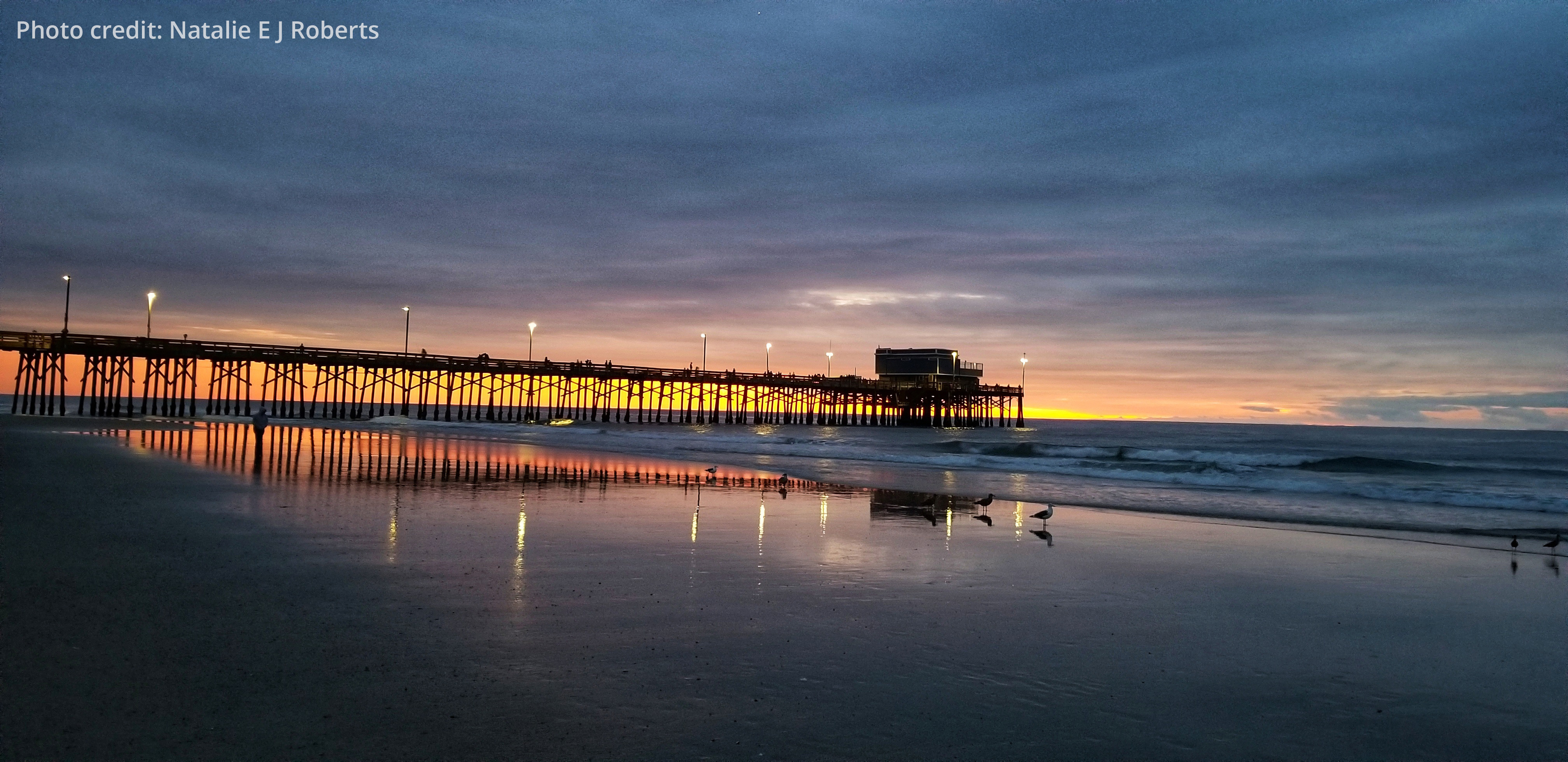States / California
California
Coastal Management
The focus is on managing coastal areas to increase resilience, with an emphasis on balancing environmental, economic, and human wellbeing. Mandated by the Coastal Zone Management Act, the two federal programs designed for this task are the National Coastal Zone Management Program and the National Estuarine Research Reserve System. Programs are administered, on the federal side, by NOAA’s Office for Coastal Management, in partnership with the coastal states.

State Programs
In this state, the coastal zone management program is made up of three organizations, and there are three research reserves.
Coastal Zone Management
California Coastal Commission. Established in 1972 and later made permanent by the legislature through adoption of the California Coastal Act of 1976. In partnership with coastal cities and counties, the Coastal Commission plans and regulates the use of land and water in the coastal zone.
California Coastal Conservancy. A state agency established in 1976 to protect and improve natural lands and waterways, the program purchases, protects, restores, and enhances coastal resources and provides access to the shore along the length of California's coast and around San Francisco Bay.
San Francisco Bay Conservation and Development Commission. Protects and enhances San Francisco Bay and encourages the bay's responsible and productive use for this and future generations. The organization has increased public access from four to over 340 miles of bay shoreline, supported the maritime industry and sustainable port expansion, and reduced annual bay filling from 2,300 acres to a few acres for critical water needs.
National Estuarine Research Reserves
San Francisco Bay National Estuarine Research Reserve. Designated in 2003 and protecting 3,710 acres, this reserve is located in Rush Ranch and China Camp State Park, north of San Francisco. Tidal marsh restoration is accomplished there using research, monitoring, and education. (See handout)
Elkhorn Slough National Estuarine Research Reserve. Designated in 1979 and protecting 1,739 acres, this reserve provides habitat for more than 550 species of invertebrates, 100 species of fish, and 135 species of birds, including six species listed as threatened or endangered. Located on the Pacific Flyway, the reserve and the surrounding area are renowned for outstanding birding opportunities. (See handout)
Tijuana River National Estuarine Research Reserve. Established in 1982 and covering an expanse of 2,293 acres, the reserve is located just 15 miles south of San Diego in Imperial Beach, California, along the Mexican border. Daily management is a collaborative effort involving California State Parks and the U.S. Fish and Wildlife Service, with support from the Southwest Wetlands Interpretive Association. (See handout)
Impact Stories
Stories that showcase the recent work of this state's coastal management efforts.
- Restoration of the Dune/Wetland Complex at the Tijuana River Estuary
- Ormond Beach Coastal Resilience Project – Phase 1
- Building Capacity and Restoration Planning at Samoa Dunes and Wetlands
- Advancing Oyster Restoration with Shellfish Growers in New England, Mid-Atlantic and West Coast
- Building Resiliency and Restoring Critical Habitat in a Northern California Dune System
- Restoring Tidal Wetlands to Improve Shorebird Habitat, Erosion Control and Flood Protection
- Designing Floodplain and Tidal Marsh Habitat in Yolo Bypass through Berm Removal
- Regional Adaptation for Climate Resilience of Monterey Bay Coastal Communities
- Designing a Resilient India Basin Shoreline Park
- Flooding Reduction and Habitat Creation through Tidal Wetland Restoration in Novato Creek
- Rancho Cañada Floodplain Restoration Project
- Elk River Estuary Restoration: Final Design, Permitting, and Construction
- Restoring Fish Passage and Coastal Resilience in Del Norte County, California
- Developing Preliminary Floodplain Restoration Designs in Elk and Indian Creeks
- Capacity Building for Chumash Tribal Engagement in the West Coast Ocean Alliance
- Improving our Coasts with High-Resolution Land Cover Data
- Empowering Educators through Living Laboratories
- Immersive Nature Tours at California’s Tijuana River Reserve
- Enhancing Climate Resilience through Coastal Ecosystem Restoration in Elkhorn Slough
- A Path Forward; Codesigning Habitat Protection and Restoration and Community Resilience
- Wade into Estuary Recreation at a Research Reserve
- NOAA Strengthens Resilience Before, During, and After Disasters
- NOAA Cheers Citizen Scientists
- Largest-Ever West Coast Oyster Data Map
- NOAA’s “Green” Expertise Meets New Infrastructure Era
- Befriending Coastal Birds
Additional Resources
*Fast Fact Sources:
People: American Community Survey Five-Year Estimates
Beaches and Estuaries: Shoreline Mileage of the United States
Employment and Economy:
Marine Economy for the Coastal U.S.
States
Marine Economy for the U.S. Territories